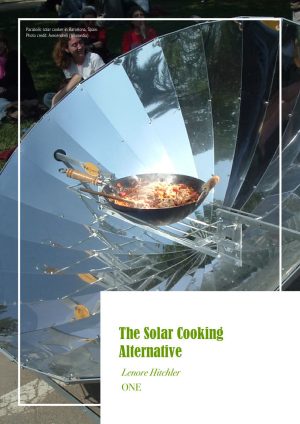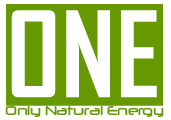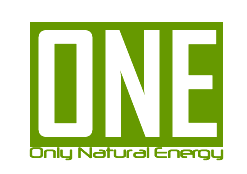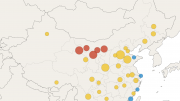 All of us depend on energy produced by the sun whenever we eat. The food that we consume comes from either plants that use solar energy during photosynthesis or animals that eat those plants. Throughout time, our ancestors ate food produced with solar energy. Therefore, we owe our very existence to solar energy.
All of us depend on energy produced by the sun whenever we eat. The food that we consume comes from either plants that use solar energy during photosynthesis or animals that eat those plants. Throughout time, our ancestors ate food produced with solar energy. Therefore, we owe our very existence to solar energy.
The food that sustains us is usually cooked before we consume it. The cooking process has historically been fueled by the stored solar energy found in wood. The developing world still mostly depends on wood for a cooking fuel. This is not sustainable and leads to deforestation. The United Nations stated that around two billion people experience wood shortages. Additionally, wood-burning stoves produce air pollution that can cause illness and even death. A good alternative for the developing world is switching to solar cooking and supplementing it with cheaper and more environmentally friendly cooking methods.
The developed world uses a variety of cooking methods. A household might employ a gas or electric stove, a crockpot, and a microwave oven. These cooking methods use energy sources that were created by geological forces such as heat and pressure that transformed the remains of plants and various other organisms into fossil fuels. Thus, even fossil fuels owe their very existence to solar energy. Unfortunately, they contribute to climate change and air pollution. To reduce pollution and the carbon footprint of the developed world, solar cookers, and other energy-saving devices are good alternatives to fossil fuels.
Just as humanity relies on energy sources produced by solar energy, the way that people grow their food is dependent on the seasonal variations in the amount and strength of solar energy reaching the planet. During the harvest season, livestock and crops mature simultaneously. This results in agricultural surpluses that must be preserved for future use. One way to do so is to use solar energy to dry meat and produce. The National Center for Home Food Preservation at the University of Georgia reported on the history of using solar energy to dry food. The organization stated that “Evidence shows that Middle East and oriental cultures actively dried foods as early as 12,000 B.C. in the hot sun.”
Employing solar energy to dry crops is still necessary in the developing world. The Food and Agriculture Organization of the United Nations reported on the loss of food crops due to food spoilage in developing nations. They stated that “Losses of sweet potatoes, plantain, tomatoes, bananas and citrus fruit sometimes [are] as high as 50 percent.” Using solar food dryers could preserve these crops so that they do not go to waste.
Besides drying food, smoking is another method of food preservation. Smoking involves burning wood that was produced during photosynthesis using solar energy and has been around for thousands of years. According to The Oxford Companion to Food, “As early as 3500 BC, the Sumerian civilization of Mesopotamia was smoking fish; and the Chinese may well have been practicing it equally early. … The remains of what seems to be a fish drying and smoking station have been discovered by the River Bann in Ireland. They are dated to about 2000 BC.”
Thus, humanity exists because of food grown, preserved, and cooked using solar energy. In the past, food was cooked using solar energy stored in either trees or fossil fuels. However, solar cookers are a way to cook food directly using sunlight immediately as it reaches the planet.
Unfortunately, there are quite a few disadvantages of using solar cookers. Solar cooking must take place outside, except for window solar cookers. Solar cookers cannot be used before sunrise or after sunset. Additionally, their use is limited by cloudy skies or bad weather, such as heavy winds, cold temperatures, rain, and snow. Other limiting factors are cultural or personal objections. For example, it must be convenient to cook the culturally preferred foods of the area. Many urban dwellers in apartment buildings do not have access to an area where they can use a solar cooker. Also, women are the primary cooks in much of the world, and some cultures limit their ability to leave their residences.Another criticism of solar cooking is that it is an impractical pipe dream of hippie tree-huggers. However, solar cookers have been around for quite a while. For over 300 years, inventors have designed various solar cookers. Dr. Dieter Seifert is an inventor of several solar ovens. He stated that in the early 1700s Andreas Gartner cooked with a wooden parabolic solar stove. According to the Partnership for Clean Indoor Air, in 1765 Horace de Saussure built a solar cooker. Samuel Pierpont Langley, an American astrophysicist who became the head of the Smithsonian, experimented with a solar box cooker in 1881 at the top of Mount Whitney in California. He reported that the solar cooker was able to boil water even when it was cold enough that the ground was covered with snow.
The Partnership for Clean Indoor Air also provided additional information on the history of solar cooking. The organization reported that in the 1860s, “French mathematician Augustin Mouchot combined the heat trap concept with that of a concentrating mirror to create an efficient solar oven from an insulated box which could bake bread and steam vegetables. … The contemporary solar cooking movement began in the mid-twentieth century [1953] with the work of M.I.T. scientist, Maria Telkes. … [She constructed] an insulated solar box cooker made of plywood with an inclined top of double pane glass and four large flared reflectors.”
Additionally, an article in the Journal of Thermal Analysis and Calorimetry reported that “Historically, there have been experimental reports on solar cookers including France, England, China, India and Algeria, among others.”
Thus, solar cooking has been around for over 300 years, and it is not just a countercultural fad. New innovations will inevitably make solar ovens more convenient and easier to use. A good analogy is the aviation industry. The first flight of the Wright Brothers lasted only twelve seconds, and now astronauts have already flown into outer space. In the future, solar cookers will likely become more efficient, convenient, and easier to use.
Even though there are some disadvantages to solar cooking, they are a great alternative to fossil fuels. Their energy source is free, and they don’t contribute to deforestation. Solar Cookers International reported that “A single solar cooker can prevent the need to cut down approximately one ton of wood per year.”
Solar cookers do not produce pollution and the greenhouse gases that lead to climate change. According to an article in Solar Energy, each solar cooker over its lifetime will prevent the production of 30 metric tons of carbon dioxide emissions. They can be made using instructions found online and can be built from cardboard, wood, and metal. Many types of food can be cooked in them. For example, Cooking with the Sun contains recipes for cooking meat, vegetables, legumes, grains, and baked goods such as breads, cakes, and pies.
There are various types of solar cookers in use. Solar box cookers are the easiest solar cookers to build and are the most inexpensive. Another type of solar cooker is the solar panel cooker. An example is the CooKit, which can be made for under $5 and is quick and easy to produce because it is made with cardboard that is covered with aluminum foil. Unfortunately, they must be moved to track the sun once or twice an hour. Another type of solar cooker is the parabolic solar cooker which is more expensive and complicated to produce.
Fortunately, there have been some recent innovations in solar cooking. The window solar oven is an example, and plans for them can be found on the internet. They are more expensive and complicated to build than solar box ovens. However, they are much more convenient since people don’t have to go outside when they want to cook. Solar Cookers International summarized the benefits of window solar cookers. They are as accessible as conventional ovens. When not used for cooking, they can help heat the room by leaving the oven door open to the room.
Another recent development in solar cooking is the heat-retention solar oven. Its great advantage is that it can be used at any time. According to the website Solarpedia, the “heat retention solar oven cooks at normal oven temperatures (300-400 degrees Fahrenheit) and can cook as quickly as a typical electric or gas oven at these temperatures. This oven, once it goes through an initial warm-up period, requires no preheating time since it maintains its temperature range 24 hours a day, seven days a week.” Thus, a heat retention solar oven can be used to cook or bake anytime, day or night, even on days when it is cloudy or rainy.The ovens are permanent structures and are more of an architectural feature than current solar ovens which are much more portable. Heat-retention solar ovens are good features to provide in community settings such as camps and parks, and doing so would help introduce them to the public. They can be built as permanent features of homes and condominiums. Also, these ovens can be built for apartment buildings and be provided as a collective resource such as laundry facilities and parking spaces.
Unfortunately, they are more complicated and expensive to produce than portable solar ovens. However, over their lifetimes, heat retention solar ovens are much cheaper than standard ovens as they don’t require fuel. Therefore, they are much more economically and environmentally sustainable.
One way to supplement solar ovens is by using thermal cookers. They are also known as hay box cookers, thermos bags, fireless cookers, and retained-heat cooking devices. Thermal cookers are extremely cheap, require no fuel, contribute to sustainable cooking, and have an extremely low carbon footprint. They are basically non-electric crock pots. Thermal cookers can be used for anything that is prepared using liquids such as yogurt, soups, stews, cereals, beans, whole grains, and rice dishes. According to the literature published on the subject, food cooked in them does not need to be stirred and does not burn.
Solar Cookers International added that thermal cookers “save between 20% and 80% of the energy normally needed to cook food. … Food is brought to a boil, simmered for a few minutes depending on the particle size, then put into the retained-heat cooker to continue cooking. … The retained-heat cooker itself is any kind of insulated container that can withstand cooking temperatures and fits relatively snugly around the pot. Hayboxes have been made using hay, straw, wool, feathers, rice hulls, cardboard, aluminum foil.” For those who do not wish to make their own thermal cookers, ready-made thermal cookers can be purchased online.
Another supplement to solar cooking are rocket stoves.
The Resilience website is produced by the nonprofit organization Post Carbon Institute. An article on the website reported that rocket stoves use 60% less fuel than traditional three-stone cooking fires. Rocket stoves produce less air pollution and create only 26% of the carbon monoxide and 60% of the particulate matter produced by open-fire stoves.
There are many easy instructions online to build rocket stoves. For example, “How to Build a Better Rocket Stove For About $10” is a video located on YouTube. The stove is constructed using 21 bricks, a piece of metal mesh, and a grill to lift the pot off the bricks. Wood sticks are used for fuel.
Wood sticks used for fuel in rocket stoves can be obtained from trees that have been coppiced. The permaculture website, permies.com, states that coppicing “refers to the practice of periodically cutting a tree or shrub back to ground level to stimulate growth and provide firewood.” Coppicing trees slows deforestation because the same tree repeatedly provides the sticks used for cooking with rocket stoves.
Thus, solar cookers and supplementary cooking methods are much more sustainable than using fossil fuels or traditional wood cooking stoves. Women’s lives in developing countries are easier since they do not have to spend as many hours collecting firewood. Solar cookers, thermal cookers, and improved fireplaces reduce deforestation and air pollution, and lower the carbon footprint of cooking. Therefore, the health of the planet improves. Human health is also enhanced. People’s health is no longer endangered by exposure to dangerous and polluting fireplaces.
Millions have already adopted solar cooking. Solar Cookers International reported that 4 million solar cookers are already in use worldwide. The organization stated that these cookers are estimated to improve the lives of over 14 million people, and they have been used for cooking over 7.7 billion meals.
Lenore Hitchler





